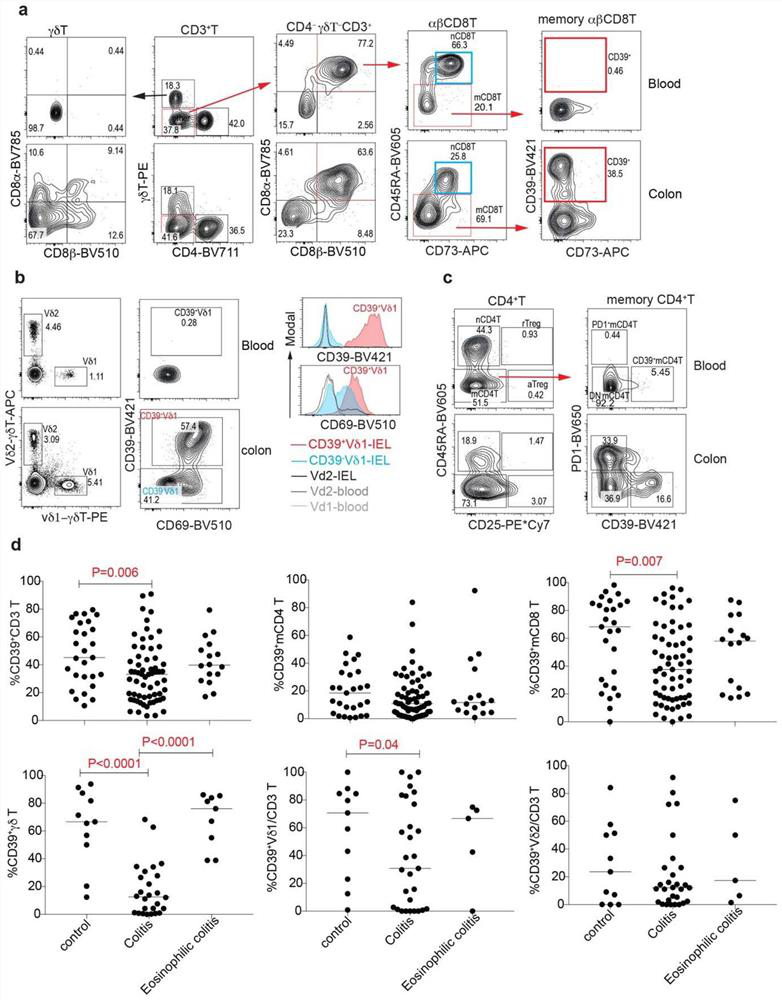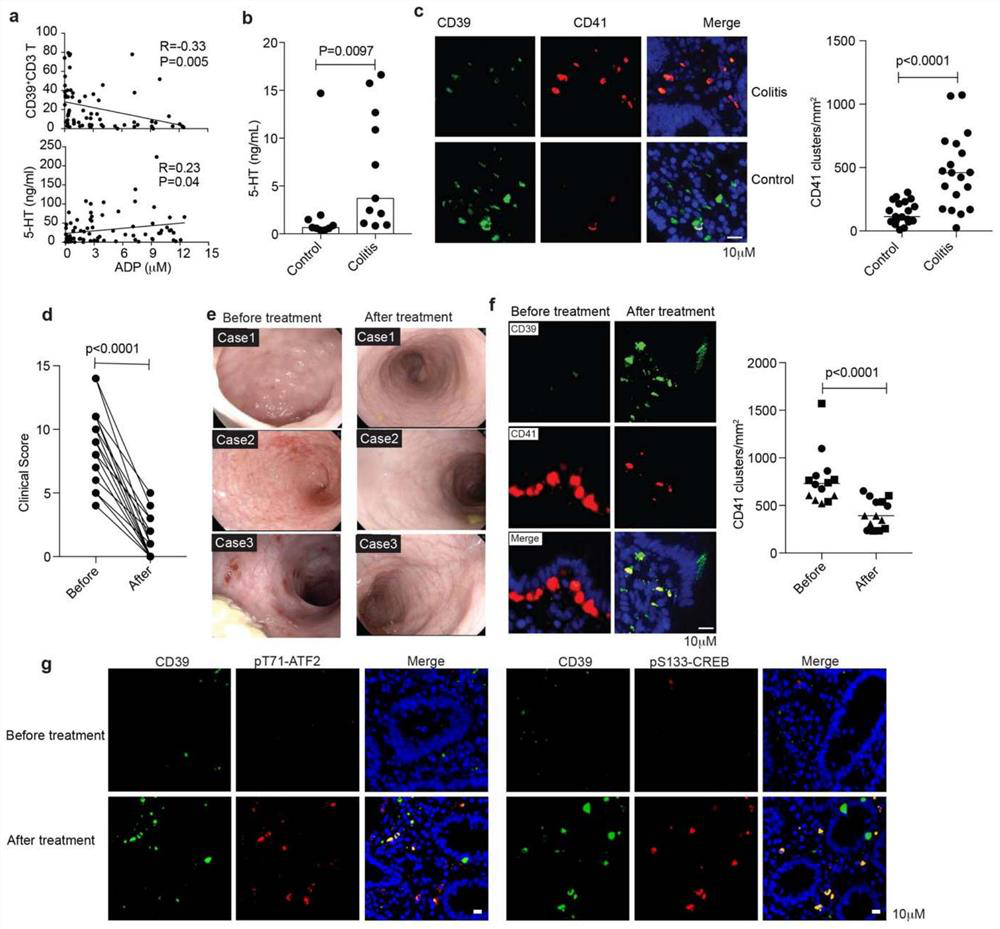Immune mechanism and therapeutic drug for gastrointestinal diseases
A technology for gastrointestinal diseases and drugs, applied in the field of gastrointestinal diseases, can solve the problems of lack of specific treatment methods for functional gastrointestinal diseases, improve the level of clinical personalized diagnosis and treatment, and promote accurate classification type effect
- Summary
- Abstract
- Description
- Claims
- Application Information
AI Technical Summary
Problems solved by technology
Method used
Image
Examples
Embodiment 1
[0100] Example 1. Single-cell sequencing and bioinformatic analysis of cells in the colonic mucosa of children with colitis and controls
[0101] I. Research program:
[0102] (1) Obtain colonic mucosal tissue from children with control and non-infectious gastrointestinal diseases, and obtain single cell suspension;
[0103] (2) After surface staining, four subpopulations of T, B, non-TB lymphocytes, and non-lymphocytes were sorted by flow cytometry;
[0104] (3) Single-cell transcriptome analysis for each cell subpopulation;
[0105] (4) Single-cell sequencing results, analyzing the clustering characteristics of immune cell subsets, and establishing the composition and transcriptional characteristics of colonic mucosal immune cells;
[0106] (5) Determine the specific functional characteristics of cell subgroups through signal pathway enrichment analysis. Identify cell-type-specific highly expressed transcription factors, and establish transcription factor regulatory netwo...
Embodiment 2
[0130] Example 2. Clinical trials and evaluation of dipyridamole in the treatment of colitis in children
[0131] The following study was carried out on the colonic mucosa of the patients described in Example 1, ie children with non-eosinophilic colitis and eosinophilic colitis (67 and 23 cases, respectively), and 28 control children. Please refer to Table 3 for the condition of the patients.
[0132] Table 3. Clinical characteristics of control and disease groups
[0133]
[0134]
[0135]
[0136] *P<0.01 and **P<0.001 are compared with the control group; #P<0.01 and ##P<0.001 are compared with the non-eosinophilic colitis group.
[0137] It was investigated whether reduced expression of CD39 in the colonic mucosa exacerbates inflammation by promoting ATP and ADP accumulation. First, we correlated CD39 expression on T cells with ATP and ADP excretion in colon biopsies stored overnight. In these cases, ATP cannot be detected. However, the decreased expression of ...
Embodiment 3
[0155] The effect of dipyridamole in DSS (dextran sulfate sodium, dextran sulphate sodium)-induced acute colitis model
[0156] mouse
[0157] Six- to eight-week-old male C57BL / 6J mice (20-22 g) were purchased from Guangzhou University of Traditional Chinese Medicine. The mice were given regular food and water before the experiment. Weight-matched mice were used in all studies. Animal studies were approved by the Animal Care and Use Committee of Guangzhou Medical University (permit number: 2019-471) and performed according to institutional guidelines.
[0158] DSS-induced acute colitis
[0159]Mice were pretreated with dipyridamole (10 mg / kg body weight, Sigma-Aldrich) or vehicle (2% DMSO, 10% ethanol, 88% corn oil) twice daily for 3 days, followed by DSS (36,000– 50,000MW), MPBiomedicals) were added to their drinking water (3%) for 9 days. Control mice were given regular food and water. Mice were monitored daily and euthanized if they lost more than 20% of their body we...
PUM
| Property | Measurement | Unit |
|---|---|---|
| diameter | aaaaa | aaaaa |
Abstract
Description
Claims
Application Information
 Login to View More
Login to View More - R&D
- Intellectual Property
- Life Sciences
- Materials
- Tech Scout
- Unparalleled Data Quality
- Higher Quality Content
- 60% Fewer Hallucinations
Browse by: Latest US Patents, China's latest patents, Technical Efficacy Thesaurus, Application Domain, Technology Topic, Popular Technical Reports.
© 2025 PatSnap. All rights reserved.Legal|Privacy policy|Modern Slavery Act Transparency Statement|Sitemap|About US| Contact US: help@patsnap.com



